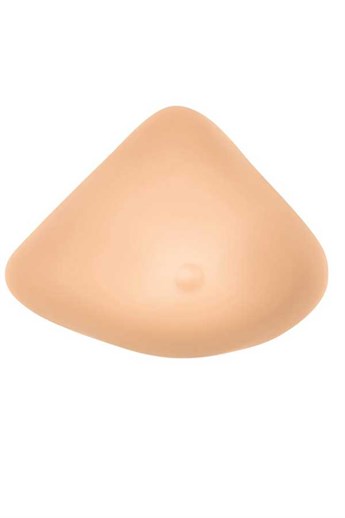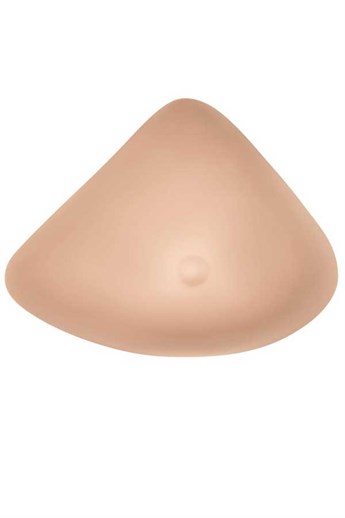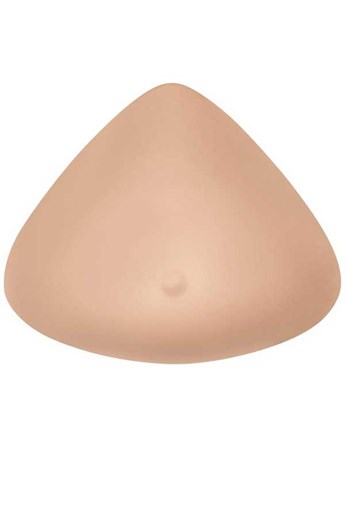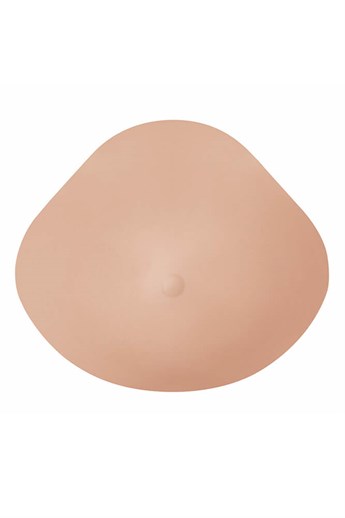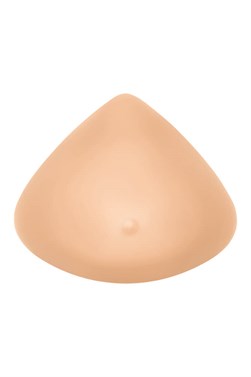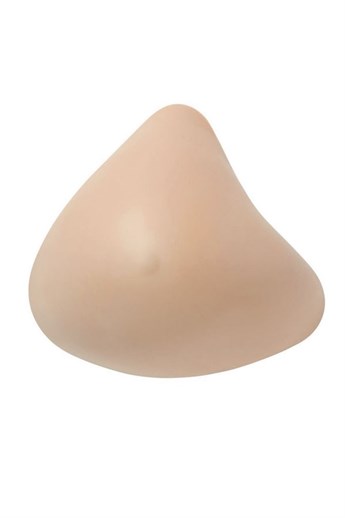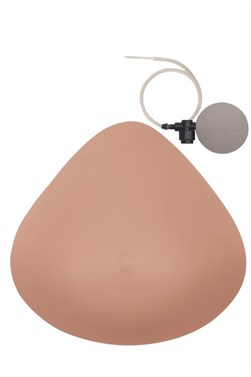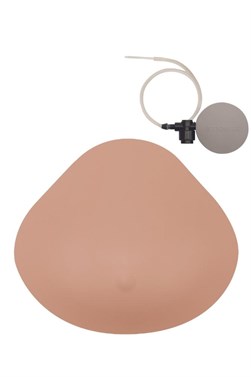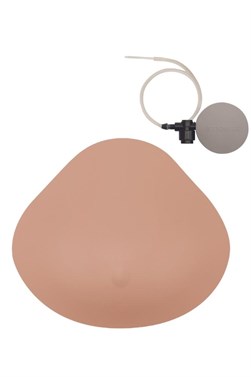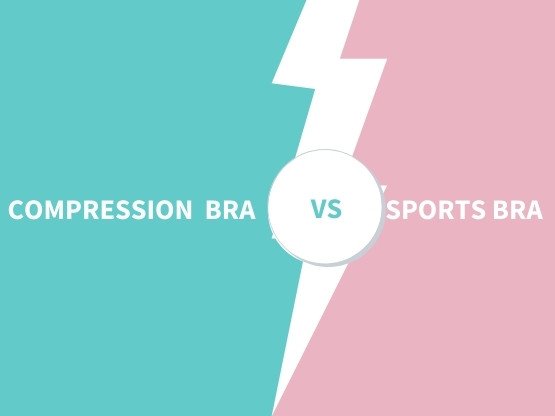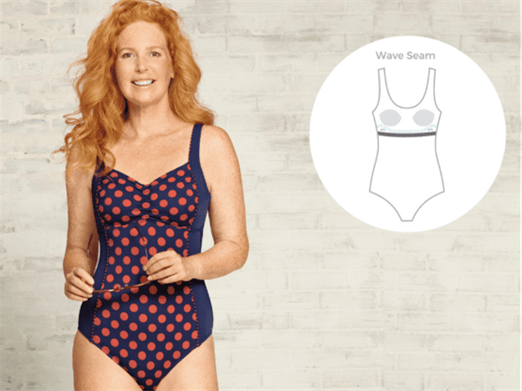The Look, Feel and Touch of Reconstructed Breasts
Questions one woman asks herself as she considers breast reconstruction following a mastectomy.
A woman considering reconstruction after
by Kathy Steligo
From an aesthetic viewpoint, good reconstruction recreates the cleavage, projection, and soft contours of a woman’s natural breast. While individual features, like the structure of your chest and the elasticity of your skin, influence reconstruction, it’s worthwhile to choose your plastic surgeon carefully; his skill and experience has everything to do with your reconstructive outcome.
Most surgeons recommend women talk to patients who have been through reconstructive surgery, and who can give a personal perspective that the surgeon can’t.
Taking a look at reconstruction
Using sophisticated procedures, surgeons now fashion breasts that restore a woman’s profile when she is clothed and appear quite ordinary when she isn’t. Here’s an overview of the four characteristics—shape, size, symmetry, and scarring—that most determine how reconstructed breasts look:
Shape. Your reconstructed breast may be flatter, more round, or have less projection than your natural breast, depending on whether it is rebuilt with implants or your own tissue. Most implant reconstruction involves round saline implants, producing
Tissue flap reconstruction requires a lengthier operation and recovery period than implants, but offers distinct advantages for sculpting and customizing the new breast and fine-tuning its overall shape. Tissue flaps are a better reconstructive method after radiation; women who have implant reconstruction after radiation more frequently develop capsular contracture, a tightening of scar tissue around the implant that can harden the breast and distort its shape.
 Size. Reconstructed breasts can approximate the size of your natural breasts or can be made somewhat smaller or larger than what nature gave you.
Size. Reconstructed breasts can approximate the size of your natural breasts or can be made somewhat smaller or larger than what nature gave you.
If your new breasts are implants, your surgeon will select a model of appropriate volume to create the size you want. If you have muscle-sparing flap reconstruction, your new breast will be created from excess fat in your abdomen or buttocks. Slender or athletic women who lack sufficient fat may have to settle for a smaller breast. If your abdomen is the source of your tissue flap, for example, the size of your new breast is limited by how much tummy fat you have to spare. Dr. Jeffrey Friedman, Chairman of the Institute for Reconstructive Surgery, Methodist Hospital, Houston, explains it this way: “You can’t build a D-cup breast with an A-cup abdomen.” Additional fullness can be created by adding an implant to the flap reconstruction.
Over time, a breast created with an implant (if unaffected by capsular contracture) retains its original size, while a flap reconstruction loses and gains weight along with the rest of your body.
Symmetry. Most women’s natural breasts aren’t perfectly symmetrical, but women tend to expect perfection from reconstruction. From a surgical perspective, bilateral reconstruction presents a better chance for symmetry, because the surgeon is starting with a clean slate. He can ensure both breasts are of similar size, shape, and position.
Unilateral reconstruction is a bit
Scarring. Scarring is a natural part of the body’s healing process and an unavoidable side effect of surgery. Before they are fully healed, scars are red and
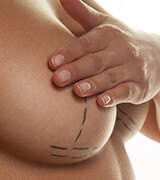 Even the best breast reconstruction can’t eliminate mastectomy scars, but when immediate reconstruction is performed, mastectomy incisions can often be camouflaged in the inframammary fold under the breast, or around the areola (in the latter case, the small scars are covered when the areola is later tattooed). So a woman entering reconstruction without any visible breast scars emerges from surgery in much the same way. (Flap reconstruction, however, does leave a lengthy scar at the donor site. Scars on the abdomen or buttocks are usually hidden by bathing suits and underwear.) In some cases, lateral or vertical incisions from the nipple are required to accommodate reconstruction. These scars become less noticeable over
Even the best breast reconstruction can’t eliminate mastectomy scars, but when immediate reconstruction is performed, mastectomy incisions can often be camouflaged in the inframammary fold under the breast, or around the areola (in the latter case, the small scars are covered when the areola is later tattooed). So a woman entering reconstruction without any visible breast scars emerges from surgery in much the same way. (Flap reconstruction, however, does leave a lengthy scar at the donor site. Scars on the abdomen or buttocks are usually hidden by bathing suits and underwear.) In some cases, lateral or vertical incisions from the nipple are required to accommodate reconstruction. These scars become less noticeable over
When immediate breast reconstruction is performed, most of the breast skin is preserved to hold the implant or tissue flap. When a woman has a mastectomy without reconstruction, most of the breast skin is removed through a long incision
Just how your scars look when fully healed depends on your age, genetics, the way your body heals, and how your incisions and underlying tissues are sewn together. Smoking doesn’t help; it can restrict blood flow and make scars more obvious.
Proper maintenance – keeping the healed scar moist, massaging the scar line, and using a scar management product – can smooth and flatten scars, making them less noticeable. When these techniques don’t do the trick,
Sensation and touch
Rebuilding the nipple, and tattooing the nipple and areola, completes the reconstruction process. The new nipple is purely cosmetic. It remains numb after
Women who undergo prophylactic mastectomy may be candidates for nipple-sparing techniques: breast tissue is removed through an incision under the breast or around the areola. If a sample of the tissue underlying the nipple is free of cancer cells, the natural nipple and areola remain on the breast. Nipple-sparing fulfills some women’s desire to keep a small part of their natural breasts, but often, the nipple flattens, changes shape, or loses much or all sensation. (Another option is a high-quality adhesive nipple.)
Many women wonder how their reconstructed breasts will feel to their partner. A breast reconstructed with a tissue flap feels naturally soft to the touch. It is, after all, your own tissue. Saline implants tend to feel quite firm, like water balloons filled to capacity, although regular massage often improves their softness. Silicone implants closely mimic the feel of natural tissue; they feel more natural than saline
Stacking the deck in your favor
 You may not be able to control certain elements of breast cancer, but you can make decisions that are likely to improve your overall satisfaction with your reconstruction:
You may not be able to control certain elements of breast cancer, but you can make decisions that are likely to improve your overall satisfaction with your reconstruction:
- Understand your breast reconstructive options. Choose a technique that will best achieve the results you want.
- Select a surgeon who is experienced and skilled with the procedure you prefer.
- Set realistic expectations. Before your reconstruction, talk to your surgeon about the best results you can expect. Ask what problems may occur and how they will be remedied.
- Remember that cosmetic flaws are part of
reconstruction , - Many women find they are far more critical of cosmetic flaws than their partners. If problems occur, decide what’s acceptable to you and what is not. Are you willing to undergo more surgery to correct a problem or is it something you can live with?
Expecting reconstructive perfection is setting yourself up for disappointment. You’re more apt to be satisfied with your results if you establish realistic expectations before your reconstruction. “I spend a good deal of time discussing my patient’s expectations,” Friedman says. “I also recommend women talk to patients who have been through reconstructive surgery, and who can give a personal perspective that I can’t provide.”





